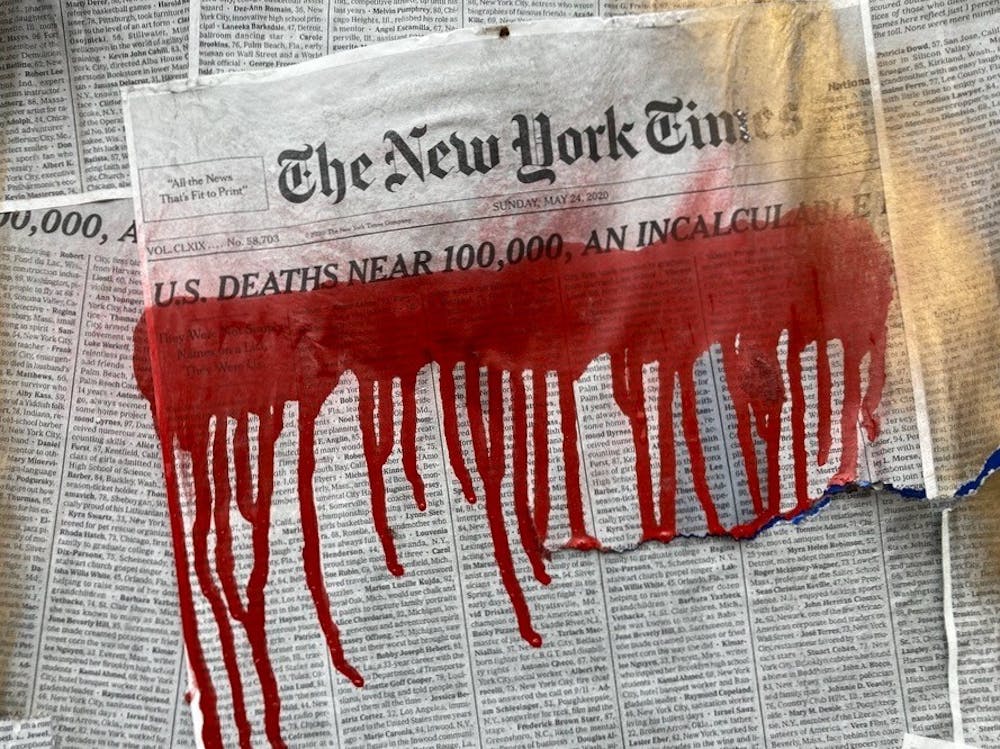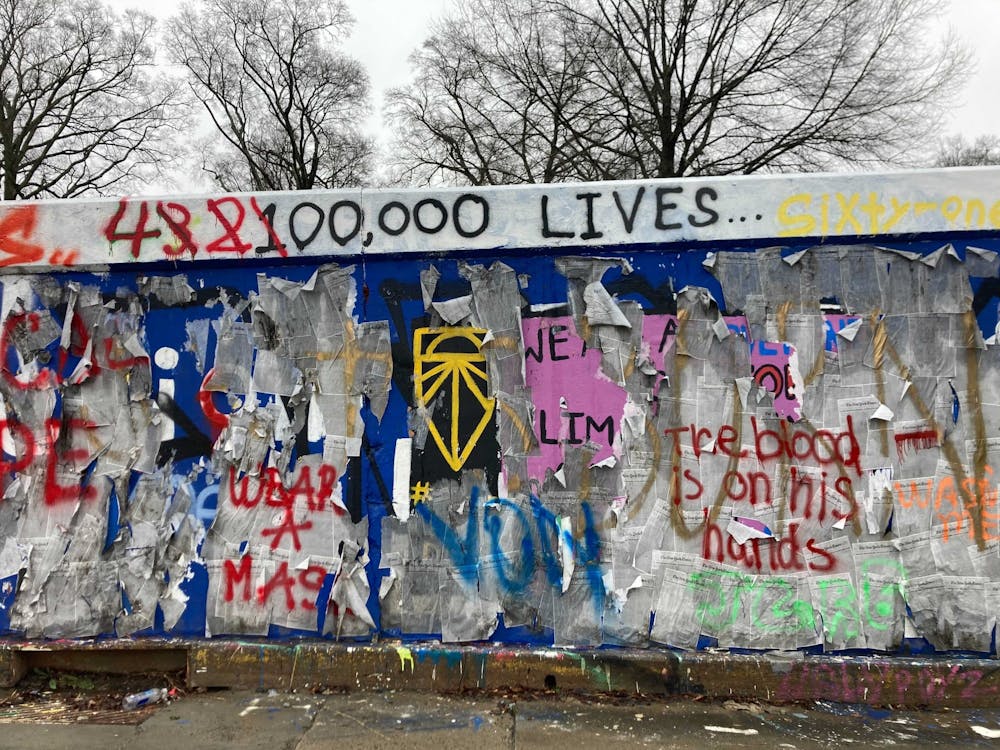I like tunnels. Tunnels were veins leading to Boston’s Logan International Airport. Every summer, they coursed with anticipation, that thrill of navigating a crowded airport and lifting off the runway and beginning something new. Eventually, passing through a tunnel—that temporary eclipse, the re-emergence into light—became an act of wonder. You go in. You come out. In between, maybe, the world changes. I liked to imagine that other side. Who would greet us there? What worlds might we be entering?
Don’t be surprised, then, to find me here, on this cold, wet morning in January, standing in the middle of a tunnel. Called the “free expression” tunnel, it’s the gateway to East Campus. A psychedelic array of paint envelops the walls: orange, white, neon yellow, black and baby blue. There are squiggles and splotches, swear words and Shrek faces; near the entrance, a flock of blue and yellow handprints hovers around a chapel silhouette. The walls stretch on for about twenty feet on both sides, like some enormous coloring sheet for a horde of crayon-carrying toddlers, or maybe for a stir-crazy Jackson Pollock.
I lean my brown backpack against the railing that separates the road from sidewalk. Except for the occasional car rumbling overhead, or the water murmuring in the drain and trickling down the walls, the tunnel is silent, a catacomb. I walk on, my eyes and fingers tracing the walls, which feel warm compared to the frozen sky, my mind wandering and wondering what I will see next, but certainly not anticipating this image that reminds me of mangled flesh—a jagged, convulsing mural of New York Times pages.
Dozens of pages hang from the wall, each bearing the same headline emblazoned from Sunday, May 24, 2020: “U.S. Deaths Near 100,000, An Incalculable Loss.”
An avalanche of names follows.
Alan Finder, 72, Ridgewood, N.J., unflappable New York Times journalist.
Eastern Steward Jr., 71, Annapolis, Md., veteran with a gift for peacemaking.
Donald Raymond Haws, 88, Jacksonville, Fla., administered Holy Eucharist to hospital patients.
The sound of a hundred thousand ragged breaths. A litany of those left behind.
I remember seeing on Twitter that two 18-year-old twins from Durham did this. Leo and Oliver Egger wanted remembrance. They wanted to show a hundred thousand, to puncture the numbness of so many deaths. After putting up these pages, they painted “100,000 LIVES” in black at the top of the wall. In an image online, the twins hold paint rollers and pose in front of their work. One of them raises a fist. Behind them, the overlapping pages spread from top to bottom. It looks tidy, almost like art.
That was from May of last year. Time and the pandemic have galloped forward since then. Now, many pages barely cling to the wall. Jagged lines slice through the names, like some grizzly bear came and mauled the pages. Blackened by dirt and jerked by the wind, the edges curl, flap and shudder. Entire patches are gone, unveiling memories of a gentler time—scattered letters, pink and blue paint, a yellow hashtag—a rainbow of flesh peeking through the scars. At the top, someone crossed out the 1 in 100,000. Next to it, they wrote 2 in bright red. That got crossed out, too. Same with 3. Now, we’re on to 4 and counting.
New messages will come, creeping over the old. Some already have: “The blood is on his hands,” scrawled in red paint. One page has a streak of crimson with little rivulets running down, blotting out names. They look like trickling tears. Or ruptured veins.

What does it mean to remember, when memory itself is besieged by time and fresh paint? Earlier, I saw a message at the tunnel entrance: “THIS TOO SHALL (under)PASS.” It’s funny, but also comforting, in a way. No tunnel snakes on forever. The grass withers, the flower fades, dust returns to dust. Just a temporary eclipse. You go in. You come out. In between, the world changes. Is that nihilism or hope?
I touch the wall again. The paper is dry, rough. I grasp a corner and pull off a sliver. An act of wonder. It tears easily. It’s shaped like a miniature South America, or like some ragged cloud, tinged with red. The ink is fading. But I can still read the names.
Ellis Marsalis, 85, New Orleans, jazz pianist and patriarch of a family of musicians.
Richard Passman, 94, Silver Spring, Md., rocket engineer in the early days of supersonic flight.
Albert Petrocelli, 73, New York City, fire chief who answered the call on 9/11.
Get The Chronicle straight to your inbox
Sign up for our weekly newsletter. Cancel at any time.
It’s in my pocket now. I hope Leo and Oliver don’t mind. Something tells me they won’t.
Chris Kuo is features managing editor.

Chris Kuo is a Trinity senior and a staff reporter for The Chronicle's 118th volume. He was previously enterprise editor for Volume 117.

